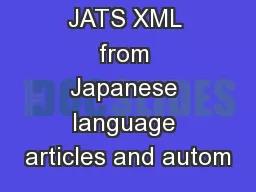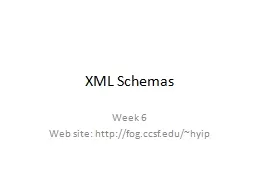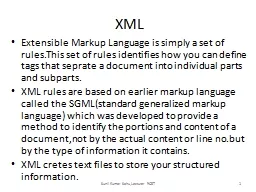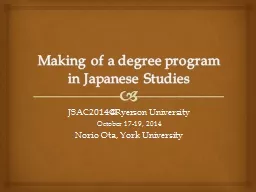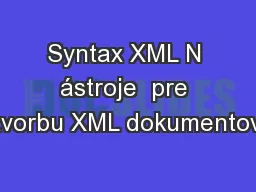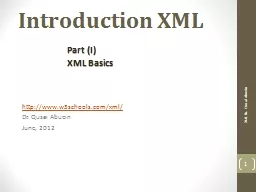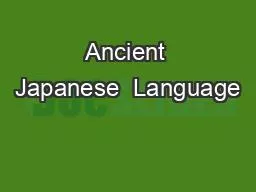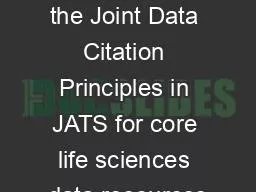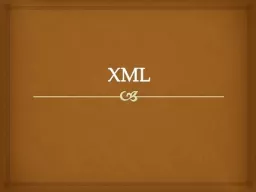PPT-Creating JATS XML from Japanese language articles and autom
Author : myesha-ticknor | Published Date : 2015-11-24
Hidehiko Nakanishi 1 Toshiyuki Naganawa 2 Soichi Tokizane 3 Tsuyoshi Yamamoto 1 1 Nakanishi Printing Co Ltd Kyoto Japan 2 Antenna House Inc Tokyo
Presentation Embed Code
Download Presentation
Download Presentation The PPT/PDF document "Creating JATS XML from Japanese language..." is the property of its rightful owner. Permission is granted to download and print the materials on this website for personal, non-commercial use only, and to display it on your personal computer provided you do not modify the materials and that you retain all copyright notices contained in the materials. By downloading content from our website, you accept the terms of this agreement.
Creating JATS XML from Japanese language articles and autom: Transcript
Download Rules Of Document
"Creating JATS XML from Japanese language articles and autom"The content belongs to its owner. You may download and print it for personal use, without modification, and keep all copyright notices. By downloading, you agree to these terms.
Related Documents

